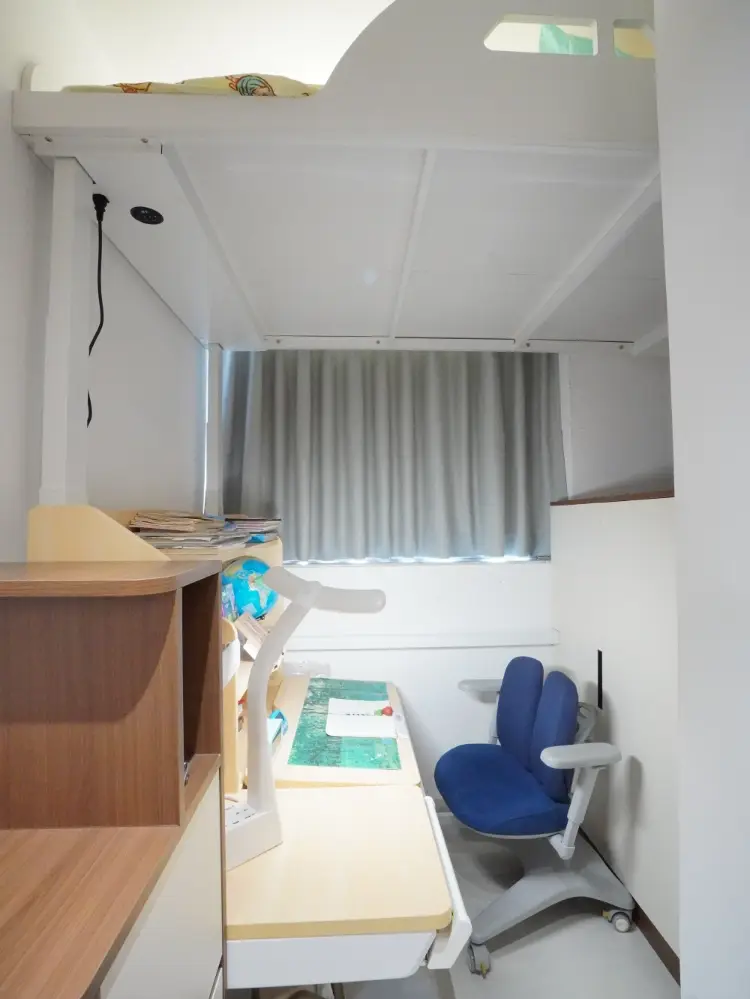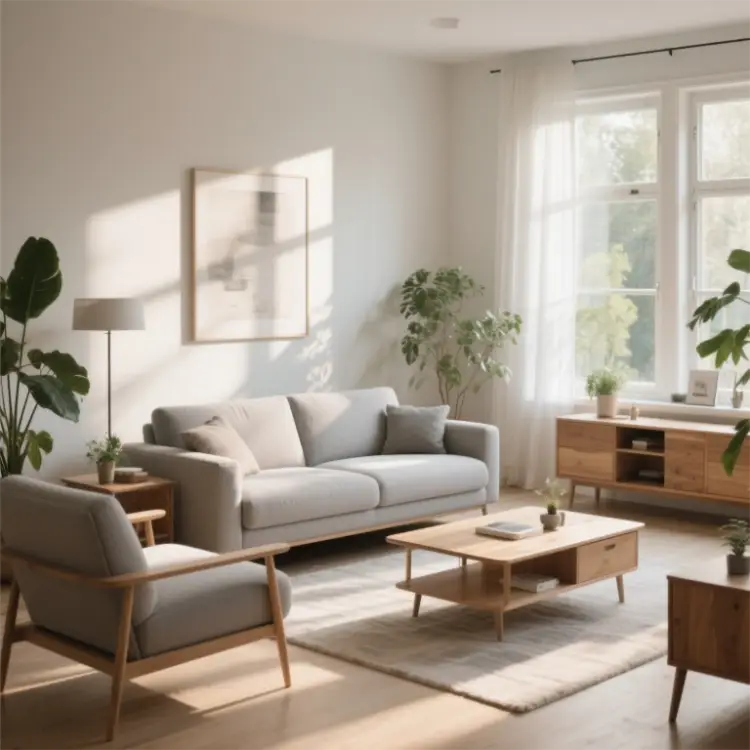Residential furniture market trends in major European countries 2024 to 2029
1. Market size and growth
Overall size
In 2024, the European residential furniture market is expected to reach $231.7 billion, accounting for 28% of the global market share. Among them, Germany, Italy, France, and the United Kingdom are the top 4 markets, accounting for over 60% of the European market share.
Affected by the real estate downturn and inflation, the market in most European countries will decline by 3%-9% in 2024, but Norway & Italy will achieve counter-cyclical growth due to actual wage growth and policy stimulus (Italy’s output value increased slightly by 1%).
Growth forecast
The compound growth rate from 2024 to 2029 is expected to be 2.26%, with home smart furniture and e-commerce channels as the core driving forces. It is estimated that the European furniture e-commerce revenue will reach $63.35 billion in 2029. This undoubtedly provides sufficient confidence for companies like us, Vaka, that are deeply involved in the field of smart home furniture.

2. Regional market characteristics
Germany
1). Market status
Europe’s largest import market, accounting for 28% of Europe’s imports, with an annual import value of over 20 billion euros.
High-end design and smart home furniture demand are strong, with living room furniture accounting for the largest share (about 35%), but furniture manufacturing sales in 2024 fell 7.8% year-on-year, the largest decline in ten years. Among them, kitchen furniture (-6.5%) and mattresses (-5.5%) fell significantly, while wardrobes (+1.1%) and integrated kitchens (+0.8%) rose slightly against the trend.
The retail end is weak, with cumulative sales falling by 16% in 2 years, and consumers turning to cost-effective products. E-commerce penetration rate exceeds 80%. The price war on e-commerce platforms has intensified. Amazon Germany accounts for more than 30% of the European furniture e-commerce market share.
2). Consumption characteristics
Practical orientation: Under inflationary pressure, demand for mid- and low-end products has increased, and plastic furniture is favored because of its lightness and low price (China’s exports to Germany increased by 22.2% year-on-year).

Intelligent penetration: High-end categories such as electric lift tables and electric lifting loft beds rely on technology upgrades to attract corporate purchases.
3). Challenges
The housing gap has reached 600,000 units, and the sluggish real estate market has suppressed the demand for furniture updates.
Italy
Europe’s 2nd largest market, with an output value of 33 billion euros in 2024, accounting for 15% of the total output value of the European wood and furniture industry.
Led by small and medium-sized enterprises, it is design-driven, with exports accounting for 70% of the output value, mainly to France, Germany and the United Kingdom.
In 2024, Output value fell by 8.3%, and exports fell by 7.8%, but high-end custom furniture still maintained a premium advantage.
France
1). Market shrinkage
Market value fell by 5% to less than 14 billion euros in 2024, with kitchens (-6.2%) and bathroom equipment (-7.2%) being the hardest hit.
Garden furniture sales fell by 8.4% due to bad weather, with only sofas and high-end beds (large sizes) performing robustly.
2). Signs of recovery
Mortgage rates fell back to below 3.5%, and the number of building permits issued increased by 12.9% month-on-month in October 2024.
Retailers actively promoted: IKEA reduced the prices of more than 2,000 products. Some big brands offer installment payments to stimulate consumption.
3). Innovation direction
Modular furniture and Volex adjustable height loft bed frames target the needs of small urban apartments.
Poland
The world’s 4th largest furniture exporter, with exports exceeding 10 billion euros in 2023, of which 87% went to the European market, and 30% to Germany.
Wooden furniture accounts for over 80%, and RTA (ready-to-assemble) furniture occupies the low-end and mid-range markets in Europe with its price advantage.
The UK
1). Market resilience
Europe’s 2nd largest e-commerce market: e-commerce penetration rate exceeds 80%. Online furniture penetration rate reaches 40%, an annual increase of 5.02%. Sofas and kitchen furniture performed outstandingly, with a market decline of 6% in 2024. Wayfair’s market share in the UK increased from 12% in 2023 to 18% in 2024, and social e-commerce (such as TikTok Shop) grew rapidly.
2). Consumer preferences
Material and design: There is a strong demand for all-solid wood (walnut, oak) furniture, and American country and minimalist styles are in parallel.
High-end customization: Real estate developers promote scene integration solutions, such as customized furniture for hotels/luxury homes.
Nordic
1). Regional differences
Norway stands out: Small furniture will grow in the 2nd half of 2024, outperforming capital-intensive products.
Sweden/Netherlands: The market declined by 6% and 7% respectively, but the demand for smart home (thermostats, energy-saving lighting) was strong.
2). Core trends
Environmental regulations: Germany’s reusable packaging policy and the Netherlands’ “right to repair” bill promote circular economy design.
E-commerce penetration: The online shopping rate in Northern Europe reached 84% (90% in Denmark), and portable home appliances (such as ceiling fans) increased by 4.81% year-on-year.

3. Supply chain and import dependence
40% of European home furniture relies on imports, with China, Poland, and Turkey being the top three source countries:
China: accounts for 47% of EU wood furniture imports, and exports to Germany increased by 45% in the first half of 2024, accounting for 30% of Germany’s imports.
Poland: 74% of Poland’s 26,000 furniture companies are engaged in wood production, and furniture exports to Germany account for 30% of its total exports, with wooden furniture accounting for more than 80%.
Turkey: accounts for 10.2% of EU furniture imports, and metal furniture exports have increased significantly.
4. Overall trends and sustainable challenges in Europe
Environmental protection upgrade
The EU Sustainable Product Ecodesign Regulation (ESPR) promotes the use of environmentally friendly materials, and the penetration rate of FSC-certified wood has increased to 40%. German consumers are willing to pay a 20%-30% premium for environmentally friendly furniture.
The second-hand home furniture market is worth 8.5 billion euros, with active transactions on platforms such as Vinted and eBay, and the acceptance of refurbished furniture by young people exceeds 60%.
57% of imported furniture uses natural materials (mainly wood), and the EU strengthens carbon footprint requirements. The EU’s “zero deforestation” policy may affect nearly half of the imports of wooden furniture, and China’s export growth of wooden furniture to Europe will slow to 2% in 2024. The EU requires that the disclosure coverage of furniture carbon footprints reach 100% by 2025, and promotes companies to adopt recyclable materials and energy-saving processes
Intelligent integration
Smart furniture (such as voice-controlled electric standing desks and home lifting loft beds) is integrated with the whole house ecology, and the global smart home furniture market will reach US$784.8 billion in 2023.
The penetration rate of smart home households is expected to exceed US$40 billion in 2026, reaching 34.7%, and the sales of products such as smart height adjustable beds and height adjustable desks will increase by 25% annually.
Cost pressure
Fluctuations in the prices of raw materials such as wood & steel and rising logistics costs squeezed profits. Companies such as La-Z-Boy turned to Mexico to set up factories, and the proportion of local procurement increased to 60%.
Economic pressure
Germany’s “frugal consumption” and France’s savings tendency suppressed the demand for updated furniture.
5. Performance of sub-categories
Living room and dining room furniture
The largest proportion (about 35%), Germany and France prefer modern minimalist style, and Italian high-end design brands such as B&B Italia have a significant premium in the global market.
Smart sofa sales increased by 25% year-on-year, and sales of side tables with USB charging functions in the western United States increased by 47% year-on-year.
Bedroom furniture
The annual sales of smart beds increased by 25%, the demand for mattresses made of environmentally friendly materials (such as natural latex) increased, and the average customer price of electric adjustable bed frames exceeded US$2,000.
Kitchen furniture
The French market declined by 6.2% due to the real estate crisis, but modular design and customized services drove some brands to grow against the trend.
Summary and suggestions
The European residential furniture market trends present a “West Cold, North Warm, Smart Differentiation” pattern:
Opportunity Market: UK (online + high-end customization), Norway (small furniture), Germany (smart office);
Strategic Focus:
Cost Optimization: Use plastic/recycled materials to reduce the cost of price-sensitive categories;
Channel Adaptation: UK strengthens e-commerce (Wayfair + independent station), Germany deploys discount channels;
Technology Binding: Embed smart functions into bedroom/office furniture. Such as our Volex electric lift loft bed.
Risk Warning: The sluggish recovery of the real estate market in France and Germany may continue until the end of 2025, and prioritize the layout of rigid demand categories (such as functional beds).
Vaka is proud to be one of the leading ergonomic standing desk China manufacturer and electric adjustable height loft bed innovator.







